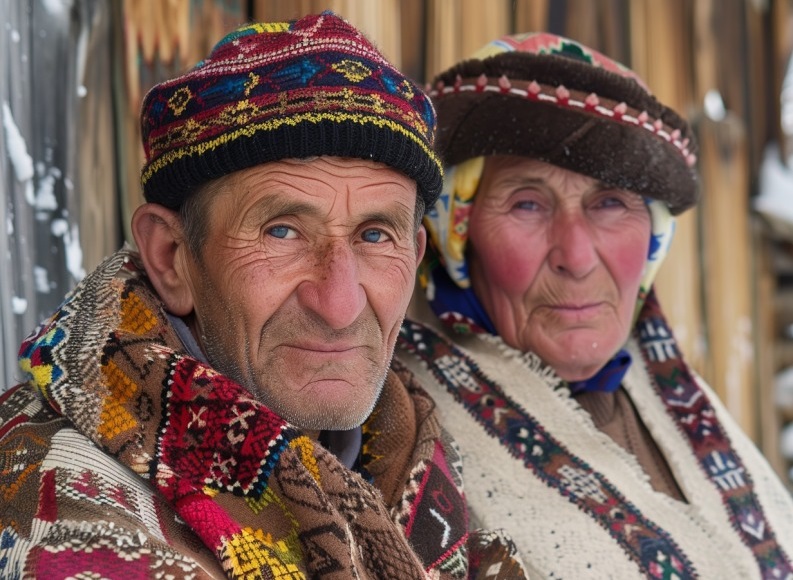
With a rich history and diverse population, Romania presents an intriguing study in anthropometry. Exploring the average height of its people unveils a tapestry woven with genetic, socioeconomic, and cultural threads. From the towering peaks of the Carpathian Mountains to the bustling streets of Bucharest, Romania’s landscape mirrors the variances in its stature. Let’s delve into the factors shaping the average height of individuals across this fascinating European nation.
What is the average height of people in Romania?
The average height of adults in Romania is approximately 177.8 centimeters (about 5 feet 10 inches) for males and 164.7 centimeters (about 5 feet 5 inches) for females. These figures may vary slightly depending on the source and the specific demographic group being studied.

The average height of Romanian men is 5 feet 10 inches (177.8 cm), while for women, it is 5 feet 5 inches (164.7 cm).
Height in Romania vs. Global Averages
On average, the height of people in Romania tends to align closely with the average height in most European countries. However, certain European nations, such as the Netherlands, Sweden, and Denmark, tend to have taller average heights. In comparison to the global average, the height of individuals in Romania is notably higher.
| Men | Women | |
|---|---|---|
| Romania | 5 feet 10 inches (177.8 cm) | 5 feet 5 inches (164.7 cm) |
| Europeans | 5 feet 10 inches (178 cm) | 5 feet 5 inches (164 cm) |
| Worldwide | 5 feet 7 inches (171 cm) | 5 feet 3 inches (161 cm) |
*Data source: Internet
The population and demographics of Romania
Romania had a population of around 19 million people. The demographics of Romania are quite diverse, with a majority ethnic Romanian population, along with significant Hungarian, Roma, and other minority groups.
Here’s a breakdown of some key demographic factors:
- Ethnicity: The majority of the population in Romania identifies as ethnically Romanian, making up around 83.4% of the population. Hungarian is the largest minority group, accounting for about 6.1%, followed by Roma (also known as Gypsies) at around 3.1%.
- Language: The official language is Romanian, which is spoken by the vast majority of the population. Hungarian is also spoken by a significant minority, especially in regions with a high concentration of ethnic Hungarians.
- Religion: The dominant religion in Romania is Eastern Orthodox Christianity, followed by various other Christian denominations such as Roman Catholicism and Protestantism. There are also smaller religious communities, including followers of Islam and other faiths.
- Urban vs. Rural: Romania has a mix of urban and rural populations. Urbanization has been increasing steadily, with a significant portion of the population living in major cities like Bucharest, Cluj-Napoca, Timișoara, and Iași.
- Age Distribution: Like many European countries, Romania faces demographic challenges due to an aging population and low birth rates. This trend has implications for healthcare, social services, and the labor market.
- Migration: Romania has experienced significant emigration in recent years, particularly after joining the European Union in 2007. Many Romanians have sought opportunities abroad, primarily in other EU countries.
- Economic Factors: Economic factors influence population trends, including fertility rates, migration patterns, and urbanization. Romania’s economy has undergone significant transformations since the fall of communism, impacting population dynamics.
Read more: The Average Height of Belgians
In conclusion,
The average height of people in Romania reflects a complex interplay of genetic, environmental, and socio-economic factors. While urbanization and modernization have influenced lifestyle and nutrition, traditional cultural practices and regional disparities also play a role. Understanding these dynamics provides valuable insights into the health and well-being of Romania’s population. As the country continues to evolve, monitoring changes in average height can offer a glimpse into broader societal trends and inform targeted interventions for improved public health outcomes.

Hi everyone, I’m Tony Scotti, an expert in the field of height increase with many years of experience researching and applying height increase methods, and have achieved promising results. I have created increase height blog as a personal blog to share knowledge and experience about what I have learned during the process of improving my own height.







